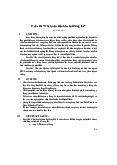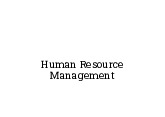



















Preview text:
Chapter 1
1._________ are involved with managing the work of employees involved directly in production. A. Front-line managers B. Middle managers C. Chief executive officer D. Top managers E. First-line managers
2. "Doing things right" describes __________ . A. effectiveness B. top managers C. efficiency D. leadership E. middle level managers
3.______ managers typically have titles such as CEO, COO, VP: A. Top managers B. Middle managers C. Subordinates D. Agency head E. First-line managers
4.______________ studied five chief executives at work and identified ten managerial roles. A. Michael Porter B. Henri Fayol C. Robert Katz D. Henry Mintzberg E. Max Weber
5._______________ first wrote about the management functions. A. Max Weber B. Henry Mintzberg C. Henri Fayol D. Robert Katz E. Michael Porter
6. According to the text, human skills include the ability to work well with other people. A. True B. False
7. There are three main reasons why the study of management has value: 1) the
universality of management, 2) _________________ 3) how management applies to entrepreneurs. A. the reality of work B. variety in organizations C. improving customer service D. Setting goals E. managing innovation
8. All organizations share the three following characteristics:
A. leadership, people, and profit maximization
B. distinct purpose, structure, and profit maximization
C. distinct purpose, profit maximization, and goal attainment
D. profit maximization, structure, and people
E. distinct purpose, deliberate structure, and people
9. All three of Mintzberg's interpersonal roles are part of the leading function. A. True B. False
10. Management functions include Planning, _________, Leading and Controlling. A. Organizing B. Directing C. Conceptualizing D. Changing E. Following
11. Bill Jackson is the coach of his college soccer team. He is probably: A. a middle manager B. a first-line manager C. a managing director D. a top manager E. a unit chief
12. A manager's job is varied and _________ . A. frustrating B. stimulating C. skillful D. engrossing E. complex
13. Efficiency and effectiveness go hand in hand. A. True B. False
14. In new organizations, workdays have no time boundaries. A. True B. False
15. Managers don't just manage in large organizations, which represent only _____ % of organizations in Canada. A. 15 % B. 30%. C. 3 % D. 18% E. 25%.
16. Interpersonal roles include leader, liaison, and figurehead. A. True B. False
17. ___________ education is being widely emphasized in university and college classrooms. A. Science B. Religious C. Ethics D. Multi-disciplinary E. Physical
18. Effectiveness is concerned with attainment of organizational goals. A. True B. False
19. Management is defined as a process of __________.
A. achieving efficiencies at the expense of effectiveness.
B. coordinating the work of others so that they are effective producers
C. coordinating work activities so that they are completed efficiently and effectively through other people D. the work of managers.
E. managing staff and resources
20. New organizations tend to be less flexible and more dynamic. A. True B. False
21. The new organization is ______________. A. rule oriented B. flexible C. stable D. inflexible E. job focused
22. Planning involves _____________ . A. hiring and firing staff
B. creating strategies to achieve goals
C. managing behavioural problems among employees
D. determining what tasks must be done E. motivating employees
23. The single most important variable in employee productivity and loyalty is the
quality of the relationship between employees and their direct supervisor. A. True B. False
24. The _________approach represents the most useful way of conceptualizing the manager's job. A. functions B. interpersonal C. decisions D. informational E. skills
25. Defining goals is a management function associated with organizing and leading. A. True B. False
26. The traditional organizations is _________. A. Involvement oriented B. Command-oriented C. Customer-oriented D. Employee-oriented E. dynamic
27. Technical skills become more important as the manager moves to higher levels in the organization. A. True B. False
28. Conceptual skills are the ability to think and conceptualize abstract and complex situations. A. True B. False
29. First-line managers are the highest level of the organization. A. True B. C. D. False
30. The final management function performed is: A. increasing efficiency B. increasing effectiveness C. concerned with outputs D. controlling E. leading
31. The function of leading also includes motivating and resolving conflicts. A. True B. False
32. The function of controlling includes determining how tasks are to be grouped. A. True B. False
33. Planning includes defining goals and establishing ____________ . A. categories B. strategies C. tasks D. controls E. hierarchies
34. The organizing function describes arranging work to accomplish organizational goals. A. True B. False
35. Mintzberg's interpersonal role includes _____________ . A. liaison B. monitor C. disseminator D. disturbance handler E. entrepreneur
36. When a CEO holds board meetings, they are acting in the role of: A. spokesperson B. disseminator C. entrepreneur D. monitor E. figurehead
37. Management roles are specific categories of ______________ . A. effectiveness B. efficiency C. people skills D. management function E. managerial behavior
38. Which of the following is typical of conceptual skills relevant to today's managers?
A. knowledge of and expertise in a specific field
B. the ability to think and conceptualize abstract situations
C. the ability to work well with other people
D. the ability to communicate, motivate and inspire
E. the ability to get the best out of their people
39. Which of the following statements about organizations is not true?
A. A home-based business can be a one-person organization.
B. A fraternity is an organization.
C. Each organization has a distinct purpose.
D. Organizations develop a deliberate structure.
E. People are necessary to attain organizational goals.
40. Which of the following is found in a learning organization? A. Controlling others B. Fear of making mistakes C. Enabling others D. Not innovating
E. Rejecting anything not invented in the organization Chapter 2
1. A change in the way an organization does business because of increasing female labour
participation rates is an example of which factor of an organization's general environment? A. Social B. demographic C. economic D. competitive E. technological
2. A stable environment might be one in which there are new competitors and activity by public pressure groups. A. True B. False
3. According to the symbolic view of management, an organization's results are
influenced and constrained by external factors outside of management's control. A. True B. False
4. According to the symbolic view of management, the actual part management plays in success or failure is minimal. A. True B. False
5. An increase in the price of a French perfume (due to changes to the franc) that a
woman executive buys on her lunch hour (rather than at home from an Avon
representative) illustrates the impact of which two of the following general environmental factors? A. economic, social B. social, competitive C. economic, technological D. social, economic E. social, political
7. Complexity can be measured in terms of the knowledge an organization needs to have about its environment. A. True B. False
8. An organizational culture continues due to _______that help maintain it. A. influences B. customs C. practices D. values E. actions
9. Degree of environmental uncertainty is determined by two dimensions: degree of
change, and degree of complexity in the firm's organizational environment. A. True B. False
10. Changes in the conditions in the general environment do not have as large an impact
on the organization as changes in the specific environment. A. True B. False
11. The general environment includes economic, political, socio-cultural, demographic and ________ conditions. A. global B. uncertain C. specific D. competitive E. direct
12. If components in an organization's environment change frequently, we call it a complex environment. A. True B. False
13. If components in the environment change frequently, the environment is said to be: A. complex B. simple C. stable D. dynamic E. specific
14. If there are few components in the environment and the manager understands
these components, the environment is said to be: A. complex B. simple C. dynamic D. general E. stable
15. If you took the position that senior management are victims of factors beyond their
control, then you would be taking the symbolic view of management. A. True B. False
16. Subcultures tend to develop in large organizations to reflect common problems members face. A. True B. False
17. When we talk about an organizational culture, we are referring to its dominant culture. A. True B. False
18. An organization's ______________ are significantly influenced by what the organization does. A. environment B. subcultures C. stakeholders D. demographics E. neighbors
19. Core values are not shared by a majority of the organization's members. A. True B. False
20. No one cultural dimension can rise above the others and shape the organization and
the way the members do their work. A. True B. False
21. Not all organizations have cultures. A. True



